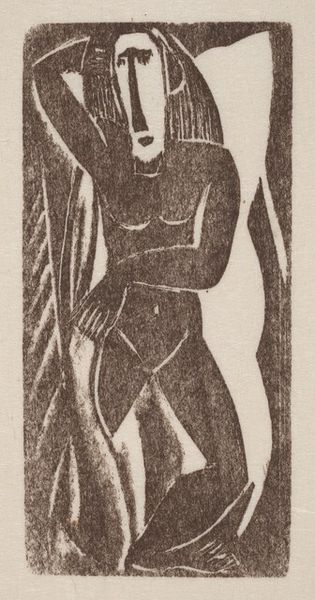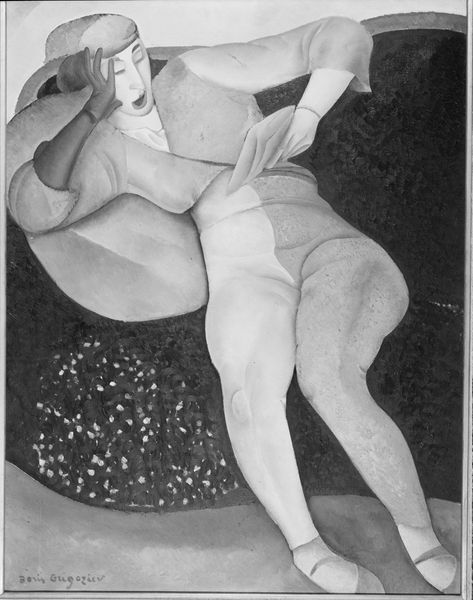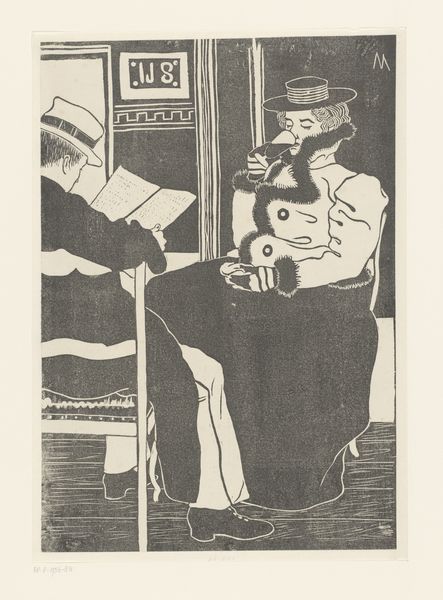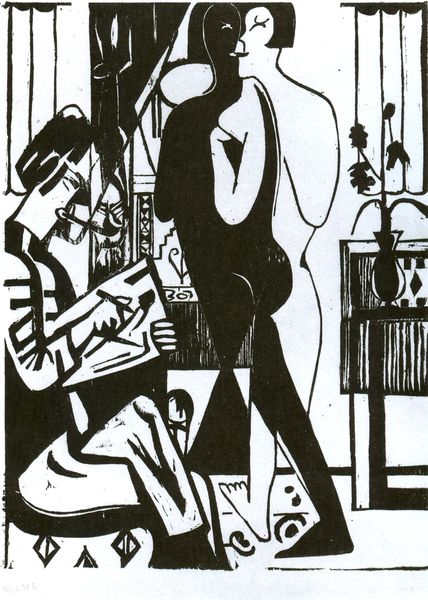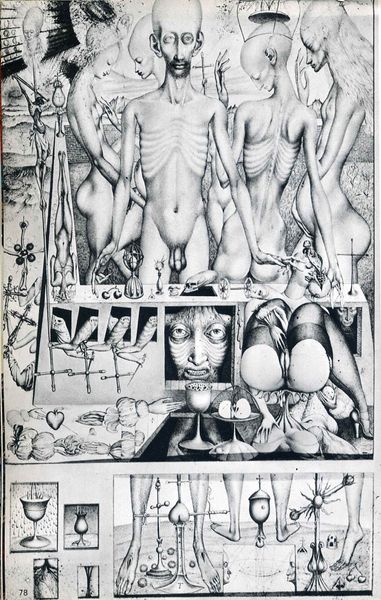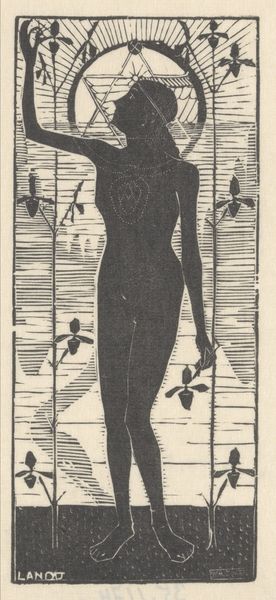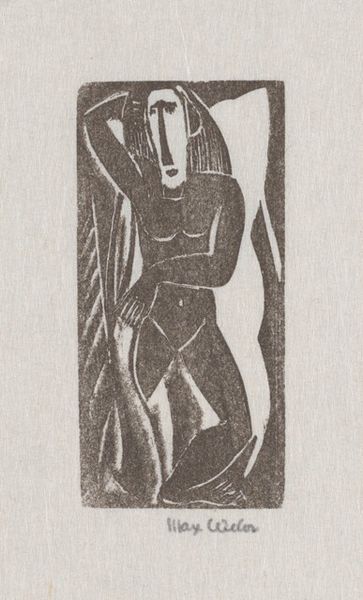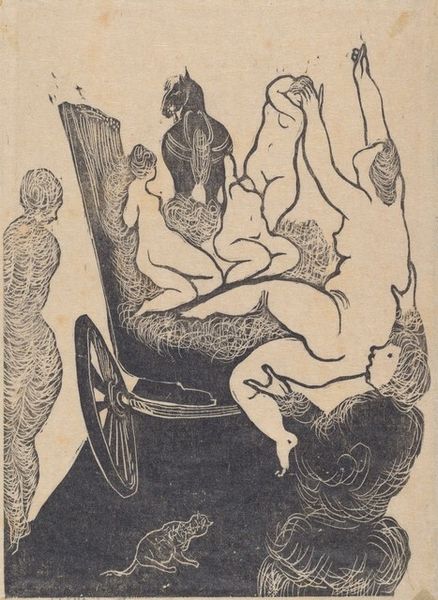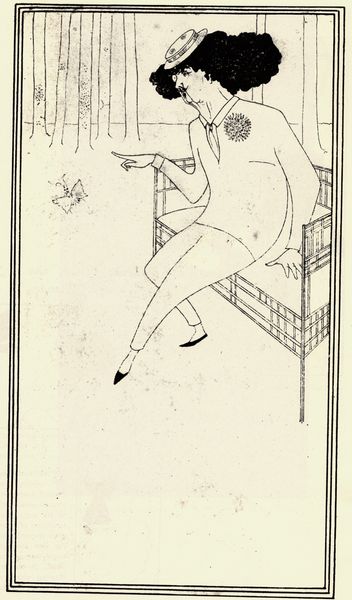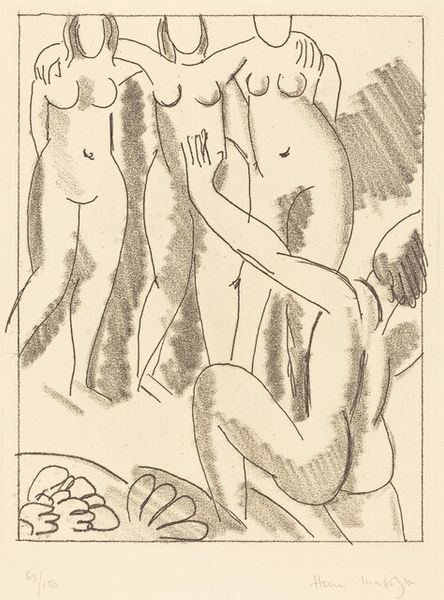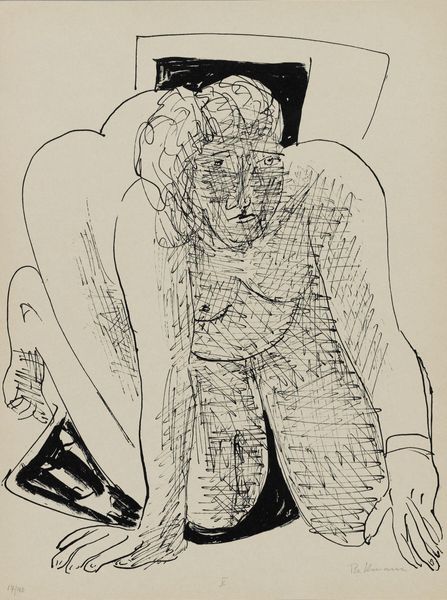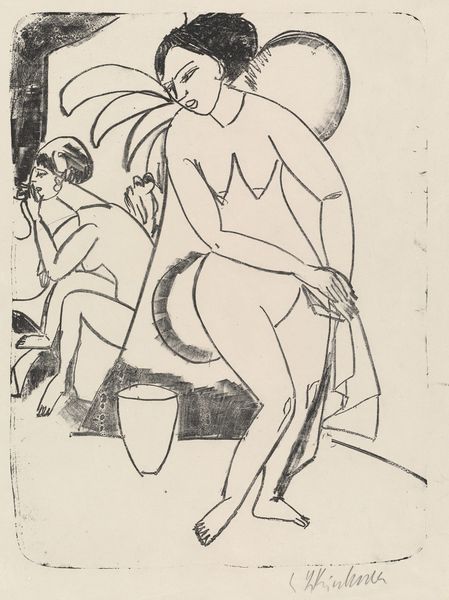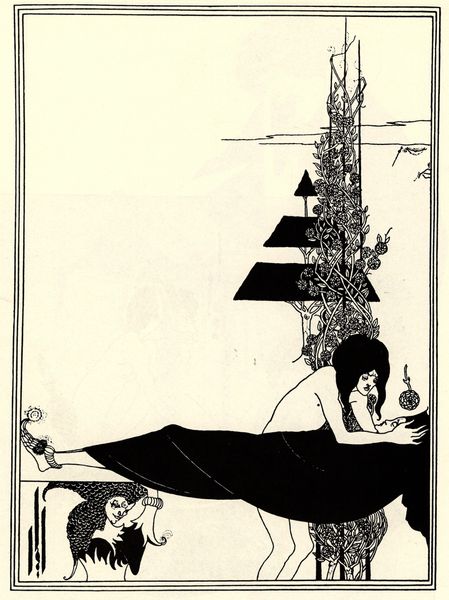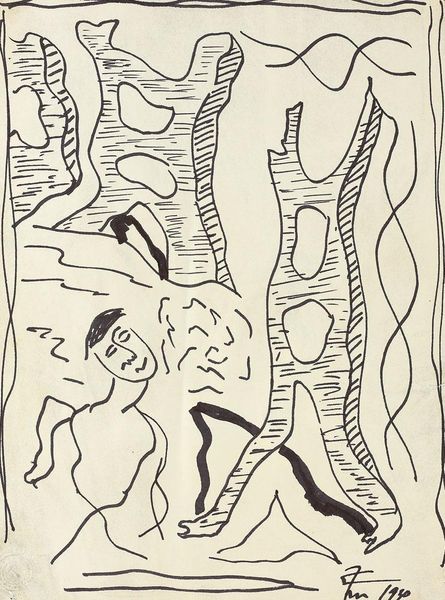
drawing, graphic-art, lithograph, print, ink
#
portrait
#
drawing
#
graphic-art
#
lithograph
# print
#
pen illustration
#
figuration
#
ink line art
#
ink
#
line
#
pen work
Dimensions: image: 22.54 × 15.56 cm (8 7/8 × 6 1/8 in.) sheet: 31.59 × 24.13 cm (12 7/16 × 9 1/2 in.)
Copyright: National Gallery of Art: CC0 1.0
Editor: We're looking at "Nameplate," a 1932 lithograph by Prentiss Taylor. The composition is very linear, and I'm struck by the variety of figures portrayed, from the idealized central figure to the stereotyped Black character on the right. What jumps out at you when you see this print? Curator: The social context of the 1930s really frames how we might interpret this work today. Think about the Depression, the rise of social realism, and the representation of labor. Taylor, aligned with leftist politics, likely intended commentary on artistic production. But it's tricky, isn't it? How do we reconcile his progressive leanings with that very troubling caricature on the right? Editor: Exactly! Is it possible this portrayal is meant satirically or as commentary on the time, even as it perpetuates a stereotype? Curator: That’s the tension, I think. It speaks to how even well-intentioned artists can be caught within the problematic imagery of their era. Consider the patronizing attitudes towards Black artists at the time, often exhibited and supported only within very constrained parameters of subject matter. What message does this piece communicate about power and representation in the art world? Editor: It seems deeply ambivalent. I see a desire to depict the labor of art making, but using these complicated visual tropes makes it difficult to know what to make of it. Curator: Precisely. It invites us to interrogate the visual language being used. The lithographic press itself is presented almost like a stage. Where do we, the viewers, stand in relation to that stage and the stories it tells? And how does that power dynamic influence what meanings we find, or project, onto this artwork? Editor: It's certainly given me a lot to think about, especially regarding the responsibilities of artists toward their subjects and audiences. Curator: Yes. Examining how social forces shape artistic creation and reception gives us critical tools for understanding not just the past but our present moment, as well.
Comments
No comments
Be the first to comment and join the conversation on the ultimate creative platform.
